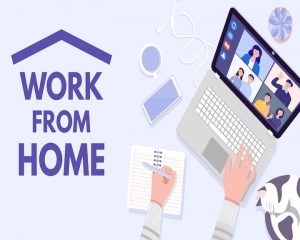Employee Wellness: How Are You, Really?
Samantha Badr
Three months into 2021 and employees are still feeling the mental and physical effects of the COVID-19 pandemic. Are you feeling burnt out? Tired of your “co-workers” at home? Any physical or mental distress? If you have answered yes to any of these questions, then you are a part of the majority. Back in 2020, employers and employees alike were concerned with the transition from office to home office – now, employees are more concerned with the aftermath of extended periods of isolation and lack of work-life balance.
A survey conducted in May and June of 2020 by the insurance company Chubb, found that 41% of Americans have had new or increased back, neck, or shoulder pain since they started working from home. In another survey conducted in June of 2020 by digital health company Hinge Health, it was found that 45% of workers reported back and joint pain – while 71% claim their pain was new or had worsened. These numbers don’t sound surprising considering that a lot of employees were forced to create office spaces in their homes. Working from bed in pajamas might have seemed fun at first, but employees are finding that they are straining their backs and necks more than ever before. The burden should not be placed on the employees to find new ways to complete their daily work tasks, especially if nobody could predict that this would be the reality for over a year.
How are employers contributing to their employees when the separation of work and home life is blurred? I recently spoke to an essential worker who informed me that at the beginning of COVID-19, employers were providing services to all hospital staff. This included a free meal or spaces set up for 15-minute massages to compensate for the lack of necessary medical supplies. Nowadays, medical personnel receives nothing of the sort – how nice. In another interview with an HR professional working in the office, all she received over the last year was a little basket with some assorted snacks. Come on, employers. We have to do better than this.
With vaccination sites on the rise, employers might start to transition employees into the office again – but what if employees are too scared to return? Unfortunately, employees won’t have a legally defensible excuse for refusing to go back to the office. Employers might have to take disciplinary actions or even terminate employees. It’s essential that employers consider all the reasons an employee might refuse to return to the office before taking any action. Employers should consider if any of their staff has an underlying medical condition that makes them more susceptible to contracting the virus or if the organization is taking all necessary safety precautions to prevent the spread. For some organizations, remote work remains a reasonable accommodation option for certain positions. However, some employees who have a legitimate high-risk condition could be granted a leave of absence if remote work is not an option. The Equal Employment Opportunity Commission (EEOC) has taken the position that leave of absence should be the second-to-last resort, with termination as the last resort. If the issues cannot be resolved, the Biden Administration recently said that laid-off individuals who turn down work because of COVID-19 safety concerns can be eligible for unemployment benefits.
For the employees feeling the burn out of working from home (WFH), there are ways to make your home/work life a happy and productive one. Even if your conference call isn’t until the afternoon, wake up early anyway. Being too lax at home can negatively alter your sleep schedule and could lead to burnout if you are working past the regular 9-5 shift. Another way to feel better while WFH, is to get dressed for the day when you wake up. Taking a shower, brushing your hair, or even putting shoes on could positively impact how much work you get done. Even though we love our pajamas and slippers, it’s hard to separate work from home if employees spend their days in their robes and fuzzy socks. It’s also important to designate a workspace. Beds and couches are not ideal places to be productive during the workday – opt for the kitchen table with a nice supportive chair, instead. Lastly, make time for breaks. Make sure you step away from the computer and go get some fresh air or a drink of water. Set a time to “clock-out” and stick to it.
If you’re working at the office, make sure that your organization is up to date on all safety precautions. EEOC policies mandate that employers ensure their employees are wearing their masks and remain socially distanced. Speak out to the HR department or your manager if you feel that your workspace is not safe. If you’re WFH, try and make the best of it. Start some new practices to separate your work and home life as much as possible. Either way, I wish you all the best, and hopefully, life can resume to some form of normalcy in the near future.

